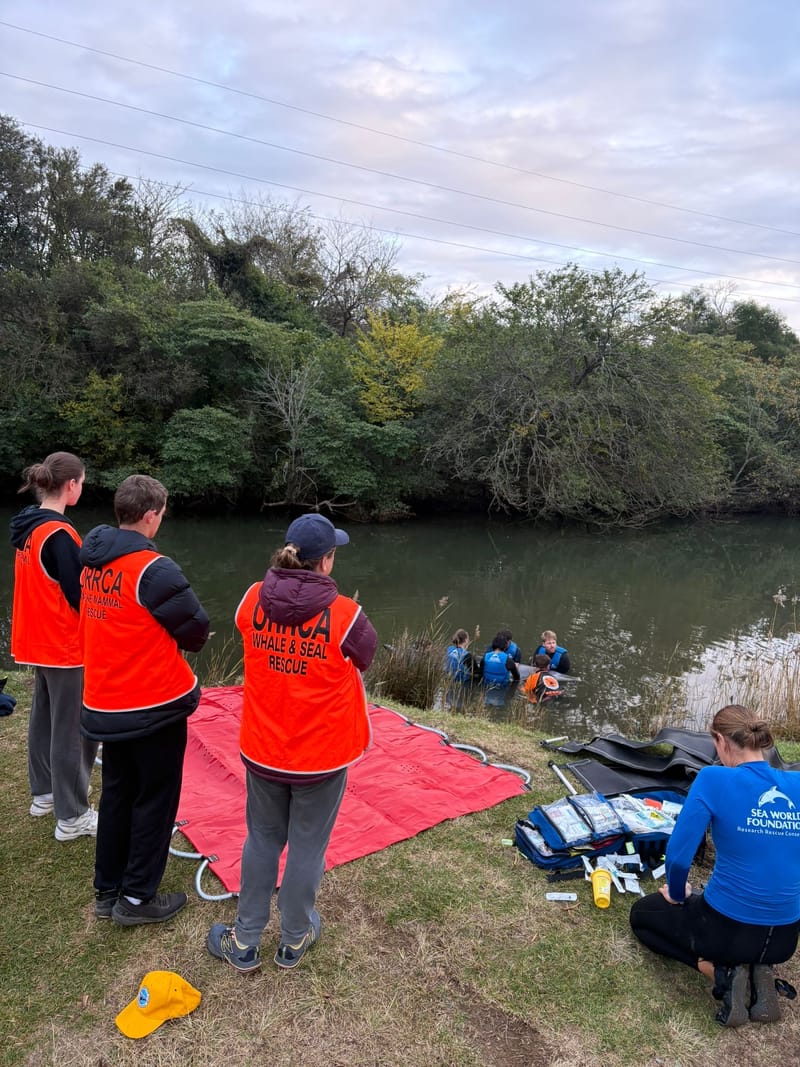The incredible diversity of the Sandon Point rock pools
Just south of the iconic old boat sheds at Sandon Point, lies a pretty non distinct rock platform. Sure, it’s beautiful, and this morning drenched in sun and without so much as a puff of wind, it was heavenly. But I wasn’t there for the scenery...
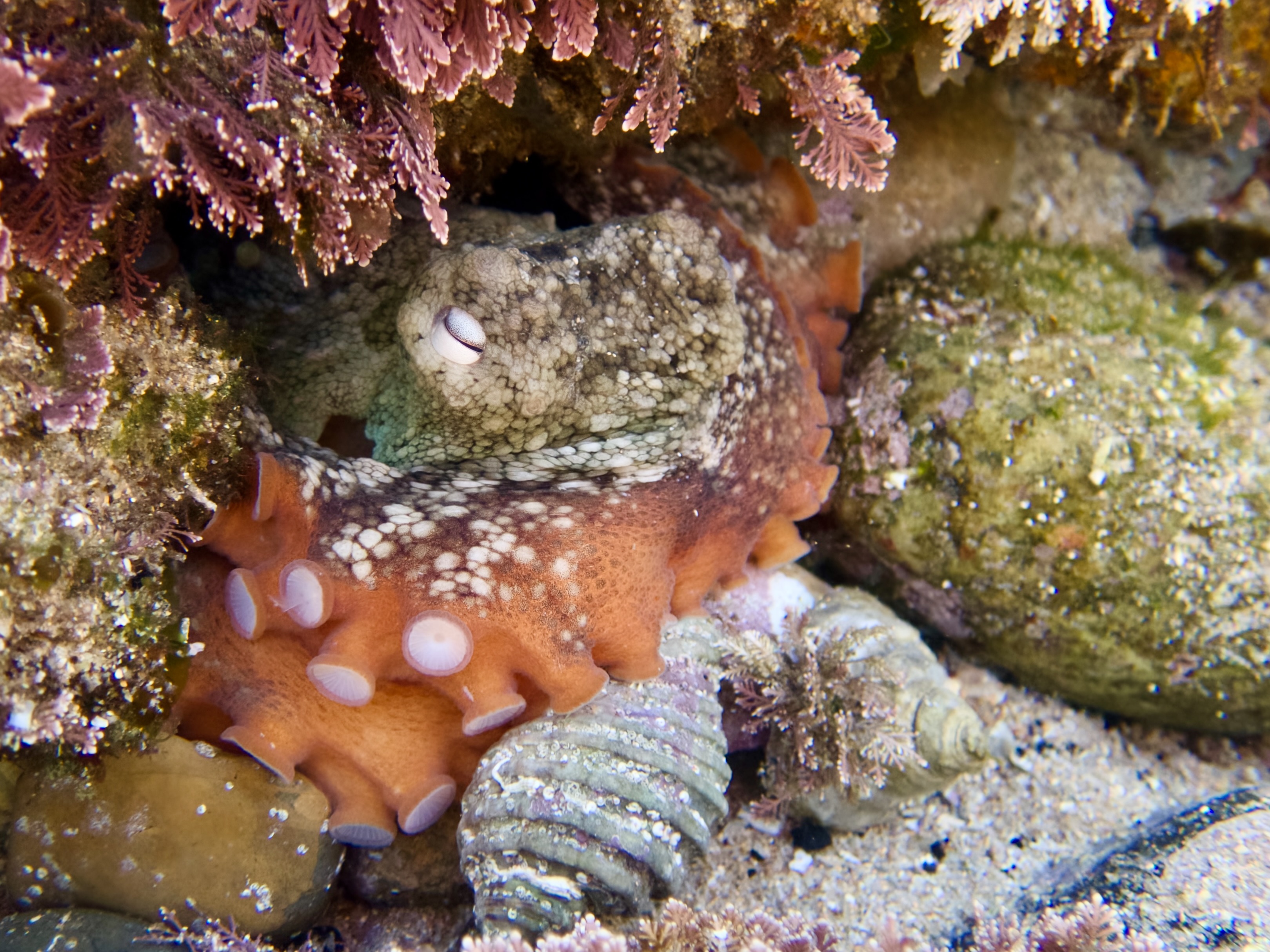
Just south of the iconic old boat sheds at Sandon Point lies a pretty non-distinct rock platform. Sure, it’s beautiful, and this morning drenched in sun and without so much as a puff of wind, it was heavenly. But I wasn’t there for the scenery or the solitude, although with schools going back I did have the place all to myself.
I was there for a dose of Vitamin Sea, but I only had an hour to indulge in one of my favourite things to do: rock pooling.
I’m always a little unsure what I’ll find after bouts of destructive weather. So much run-off makes its way into the ocean during torrential rain and the huge seas move rocks around, upend soft corals and seaweed and just generally wreak havoc on sensitive ecosystems.
But today the rock pools were absolutely teeming with life from sea stars to sea hares, a nudibranch, some bubble snails and a lovely octopus in his garden.
Here are some of the creatures you might spot the next time you do a rock pool wander.
- Eleven-armed sea stars – Coscinasterias muricata
Despite their oddly specific name, these sea stars have anywhere from seven to 14 arms. They can grow up to 30cm and are the largest sea stars found in the area. But the thing that makes them super interesting is that while they can reproduce sexually, they mainly reproduce by fissiparity. This means they essentially tear themselves in two across the central disc! You can often find these sea stars with long arms on one side and then a plethora of tiny arms where it is regrowing from the point of separation.
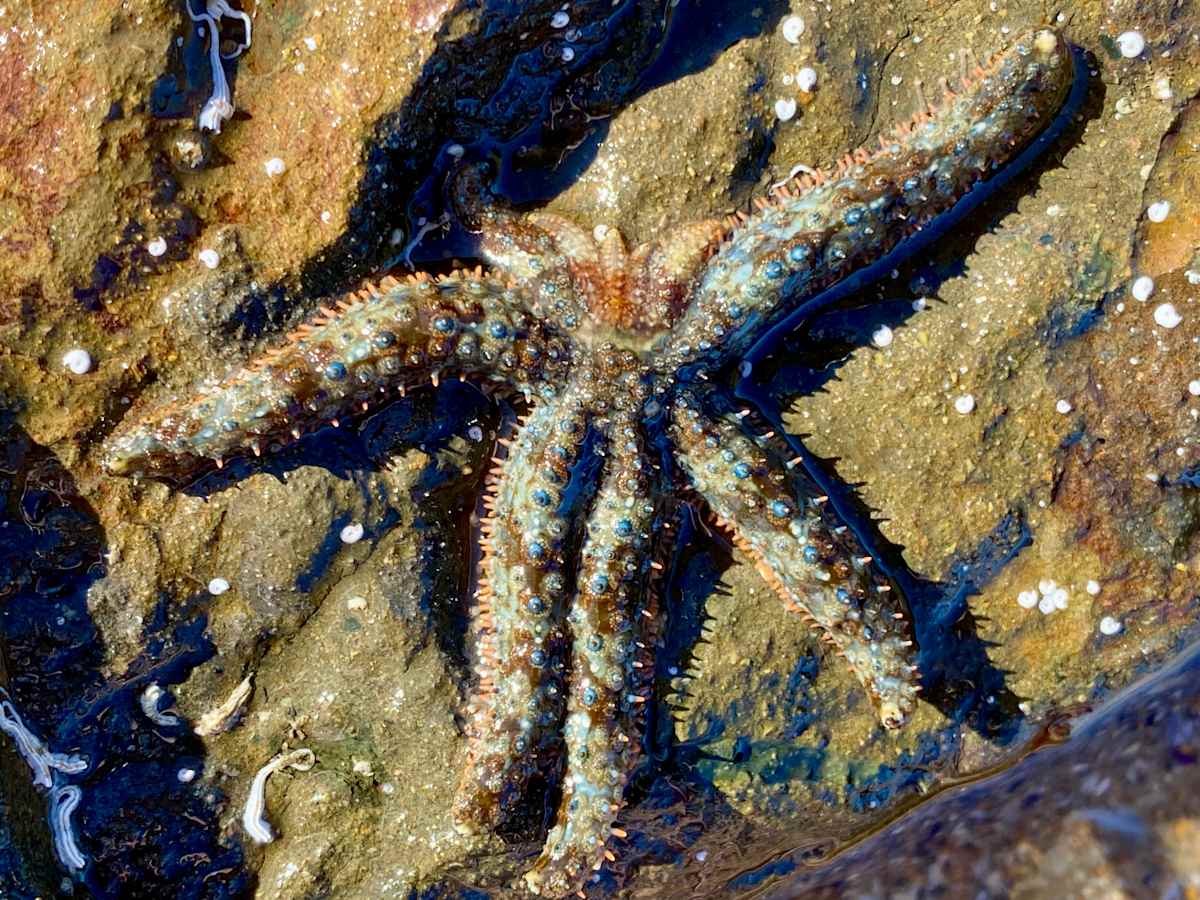
- Sea hare – Dolabrifera brazieri
With tentacles that look not unlike that of rabbit ears (hence the common name), these sea hares can be tricky to spot as they camouflage amazingly well with the algae.
The ear-like tentacles at the side of the head ‘taste’ chemicals in the water and also feel objects around them, while the two smaller behind the eye spots are used to ‘smell’ out food. You might even spot their yellow spaghetti-like egg mass attached to rocks or weed.
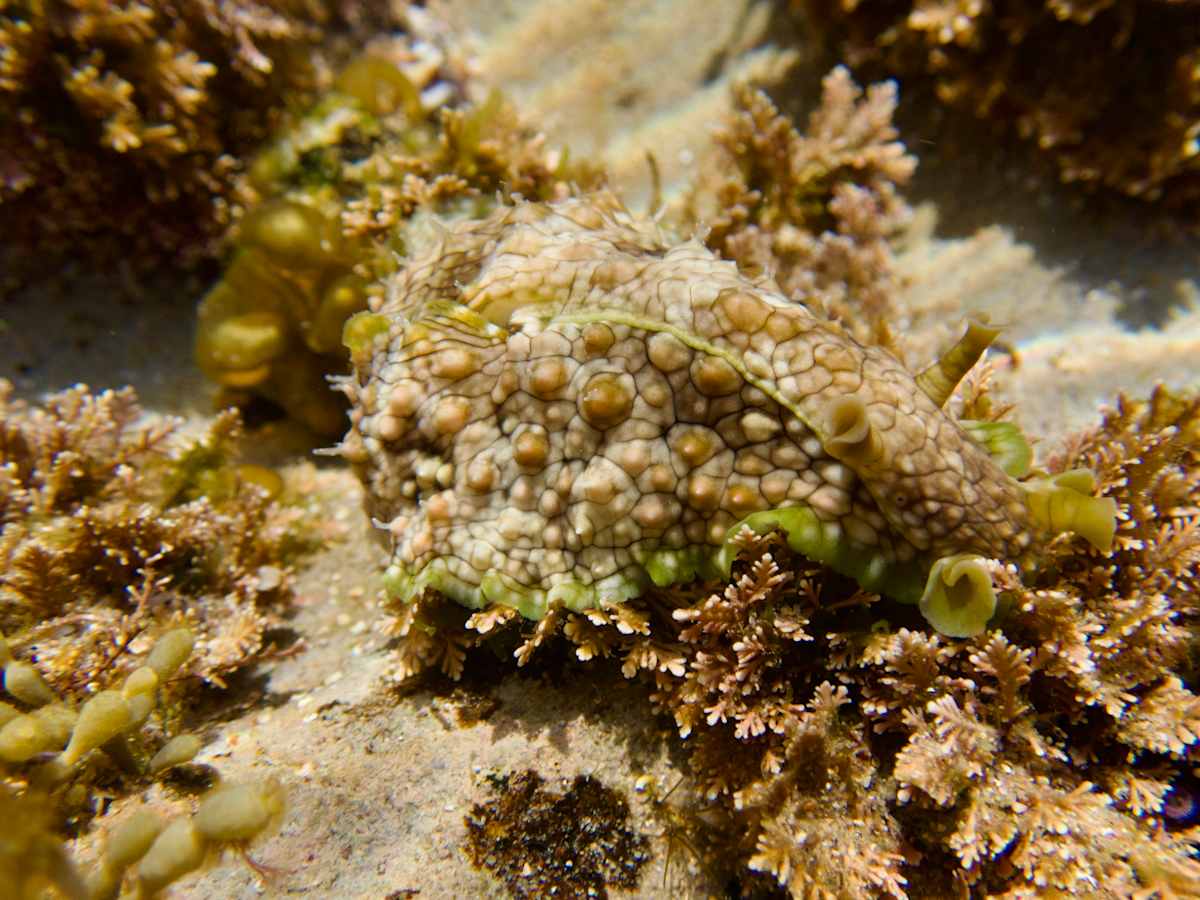
- Bubble snails – Hydatina physis and Bullina lineata
While they have fragile shells, bubble snails don’t retreat into them like, say, garden snails do. The rose petal bubble snail has a frilly body, often a deep pink in colour with a bright blue outline. These flamboyant creatures are hard to miss as they make their way across sandy bottomed rock pools before burying themselves in the sand. Not casting judgement but I’ve spotted groups of these, ah, making more bubble snails.
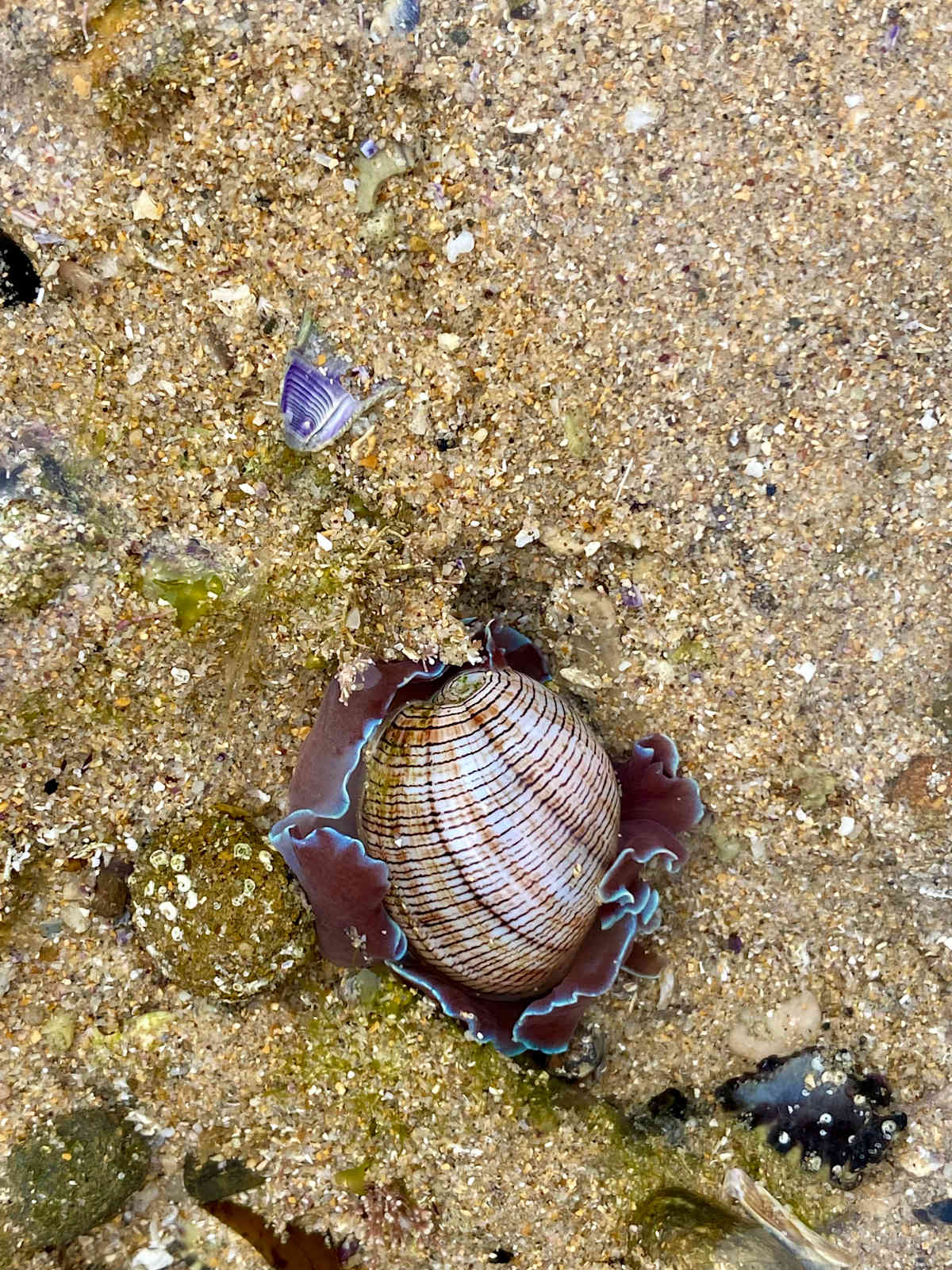
The red-lined bubble snails are really small, only a few millimetres in length, but boy are they stunning. With a translucent, neon-blue lined foot, they are a really pretty species of marine snail. Look closely and you might see its tiny little eye spots that it uses not to see, as such, but to sense light and dark.
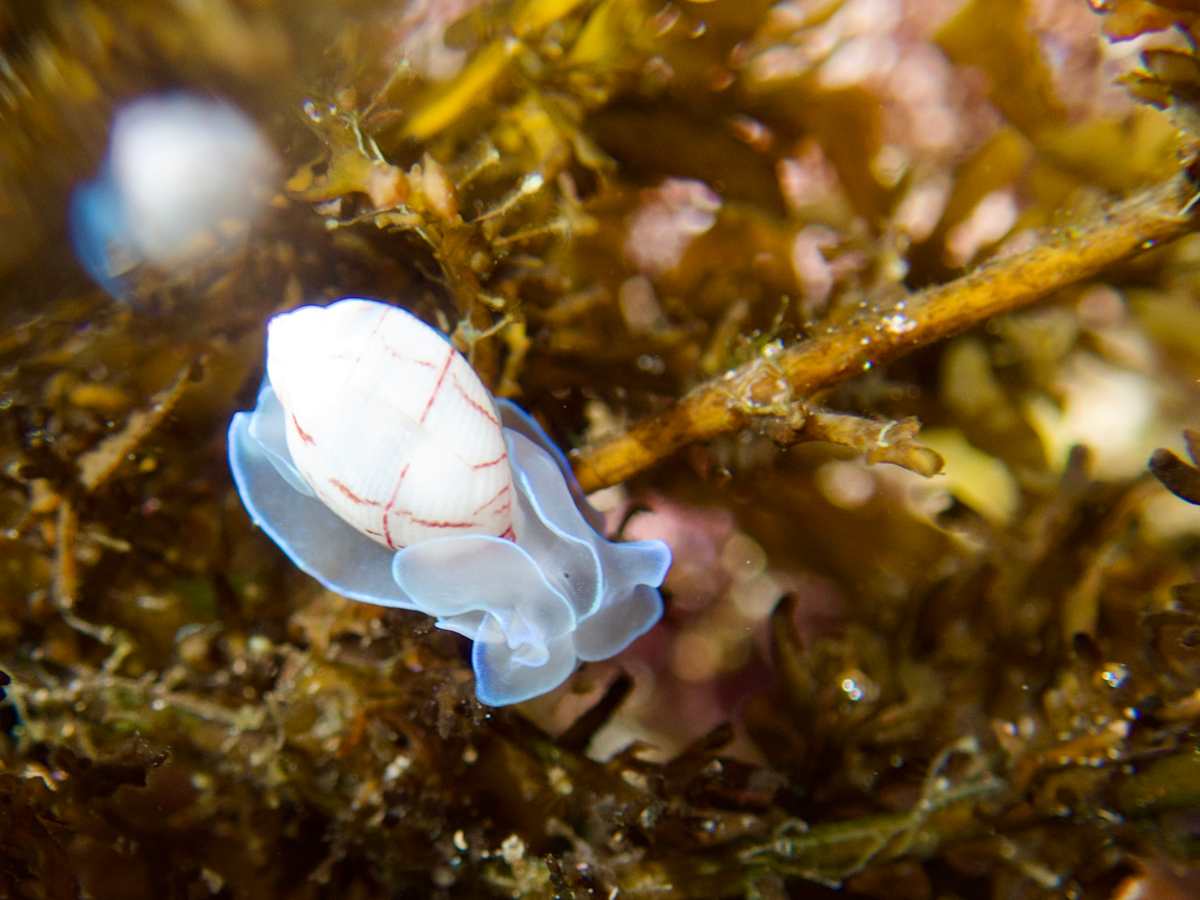
- Common Sydney Octopus – Octopus tetricus
Okay, this one is a favourite of mine. Often hiding under ledges or in amongst thick seaweed, these octopus can change the colour and the texture of their skin, making themselves almost spiky in appearance. You can often spot the entrance to their ‘garden’ before you spot the octopus, so look for small piles of large shells and rocks. The occy will use its suckers to hold the shells in place.
Watch out though, because some octopus are really curious and I’ve had more than one experience of tug-o-war where my underwater camera, or foot, are grabbed and they are incredibly strong animals.



